One of the unique features of Mount Kilimanjaro is its five distinct ecosystems that you’ll go through on your way to the summit and back down. We have already written about these five climate zones in this post: https://kilimanjarosunrise.com/the-climate-zones-of-kilimanjaro/
In this article, we are highlighting what plants grow on Kilimanjaro in each zone. You will see a lot of the strange and colorful flora on Mount Kilimanjaro as you make your way to the roof of Africa.
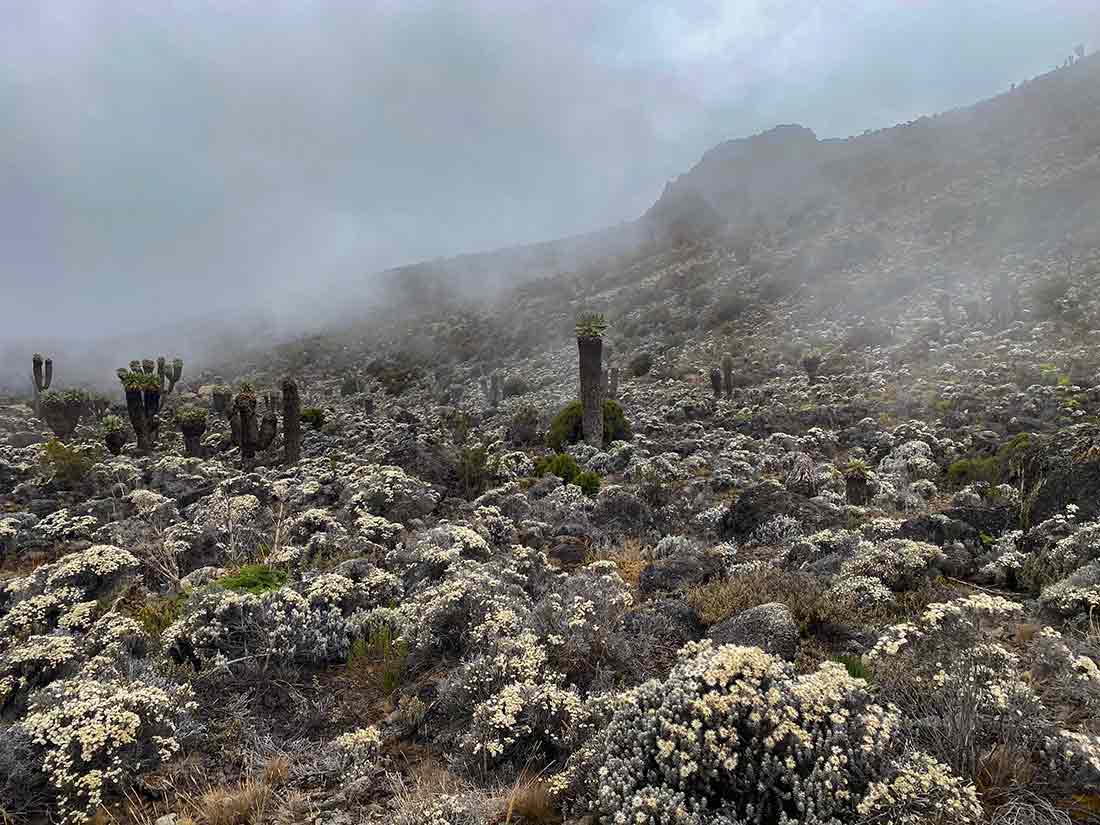
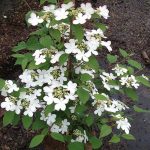
Each zone is roughly 3,200-3,500 feet from bottom to top. The temperatures vary greatly in each zone. Because of this so does the vegetation.
As a side note, Kilimanjaro Sunrise is also the name of a plant. It is a flowering tree known as the Viburnum plicatum. It is also known as the Japanese Snowball bush. This award-winning plant can grow up to 5 feet tall. Unfortunately, you will not see it growing on Kilimanjaro.
Cultivation Zone
The first zone is the cultivation zone. This zone surrounds the base of Kilimanjaro. Local tribes grow all their fruits and vegetables here. Some of the local plants are avocado, papaya, bananas, and coffee. You do not hike through this zone on your trek, but rather drive through it on your way to the park entrance. You’ll also go through it after you exit the park en route to the celebratory restaurant and on your ride back to your lodge.
Furthermore, several nonprofit organizations are planting trees around the base of Kilimanjaro to restore all the trees that were cut down by the local tribes. They use these trees for cooking and heating. You can read more about the replanting efforts here: https://kilimanjarosunrise.com/the-glaciers-on-kilimanjaro/
Rainforest Zone
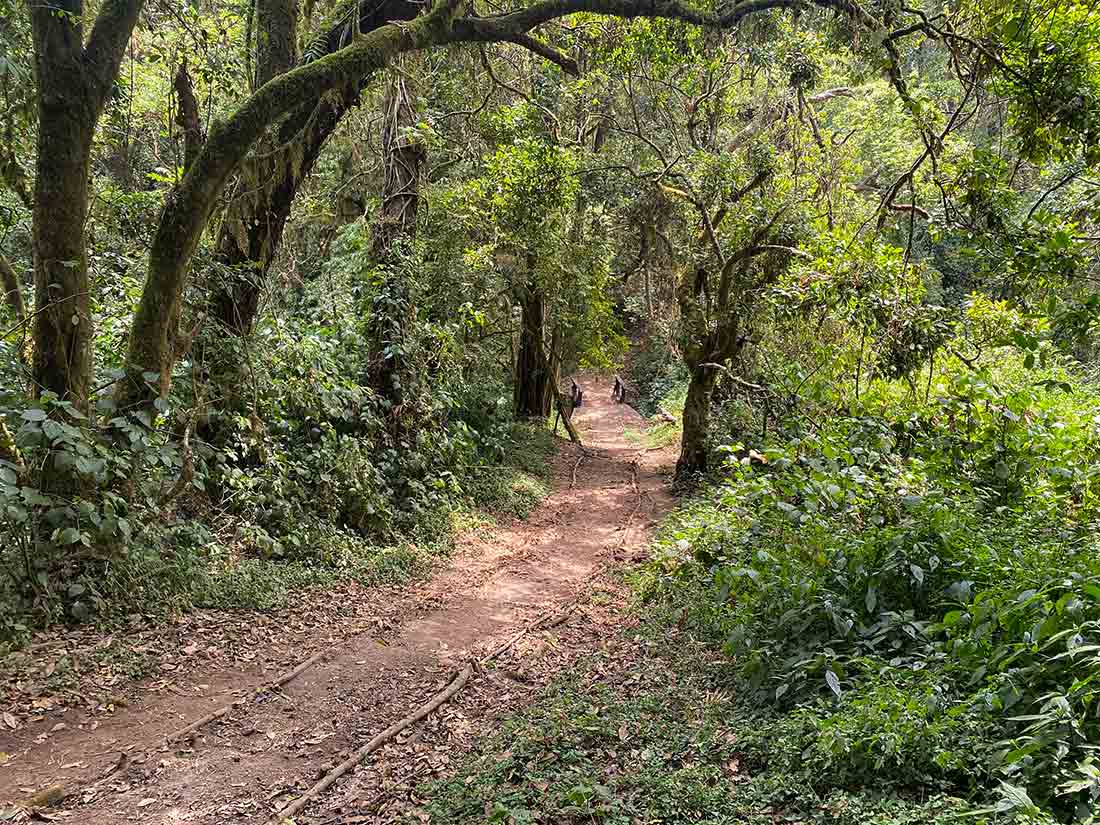
The next zone, where your trek begins is the Rainforest or Montaine Zone. It has the most vegetation on the mountain. This is due to the amount of rainfall this region receives.
As you transition to the rainforest, at the park entrance, you’ll see the aforementioned rows of planted trees. It is quite stunning.
The Rainforest zone starts around 5,500 feet and extends above 9,000 feet. In this zone, you will see many varieties of plants and flowers. Some of them are the spiky fern tree, East African Camphor, and the hanging moss known as Old Man’s Beard.
This humid region is the perfect place for the multitude of plants, some of which are endemic (only grow on Kilimanjaro) like the Impatiens Kilimanjari.
Most importantly, be careful not to stray too far from the well-maintained path, this lush rainforest also hides poison oak. That is something you don’t want to deal with on your trek.
Heather/Moorland Zone
The next zone is located between 9,000 and 13,000 feet. It is a much more arid environment. The Moorland zone receives far less rainfall than the Rainforest zone which causes it to be quite dusty. It is a harsher environment for plant life and the majority of moisture in the area comes from the mist that rises from the rainforest. the temperatures can also drop to freezing at night.
In this zone, you’ll see large heather shrubs as well as the strange giant Groundsels which are part of the Senecio family. You’ll also see Lobelias and colorful Red Hot Pokers.
Alpine Desert Zone
Above 13,000 feet you’ll ascend into the Alpine Desert. This zone receives very little rainfall. The temperatures vary greatly from day to night which makes this region void of vegetation. Of the plants that do grow here, they are small desert-like shrubs like the Everlasting Flower Shrub, yellow daisy, and long grass called Tussock.
Arctic Zone
The highest zone on Kilimanjaro is the Artic Zone. It is often frozen and covered with snow and glaciers. It is very cold at night—hovering around 0° F. During the day the sun’s rays are intense here. This harsh environment does not allow for vegetation to grow. It is only rock, ice, and dirt. Occasionally you’ll see very small lichen growing on the rocks, but more than likely you’ll be too busy with the view, the lack of oxygen, and celebrating your achievement to even notice the flora at the summit.
Plants on Kilimanjaro
List of Kilimanjaro Plants
- African blood or fireball lily
- Daisy bush
- Dead daisy bush
- Dead helichrysum newii
- Dead philippia excelsa
- Dead thistle
- Giant fern
- Giant groundsel
- Giant lobelia deckenii
- Golden daisy bush
- Hebenstretia
- Helichrysum cymosum
- Helichrysum meyeri johannis
- Helichrysum newii
- Hibiscus rosa-sinensis
- Hypericum revolutum
- Kilimanjaro impatiens
- Kniphofia thomsoniiLobelia Deckenii
- Mackinder’s Gladiolus
- Protea Kilimandscharica
- Sage grass
- Stoebe kilimandscharica
- Tree moss, also known as old man’s beard
- Tussock or bunch grass
 Final Thoughts
Final Thoughts
Trying to keep track of what plants grow on Kilimanjaro is difficult. The guides will point out many of them, but you won’t remember any of them once you are home looking at your pictures. If knowing more about the flora of Kilimanjaro is important to you, there is a field guide. It can be difficult to find, but definitely worth a look.

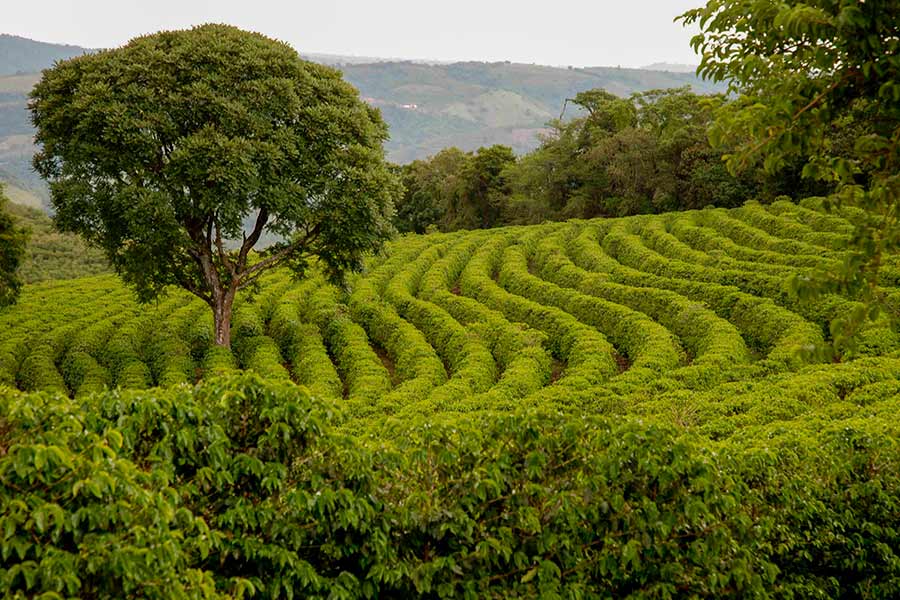
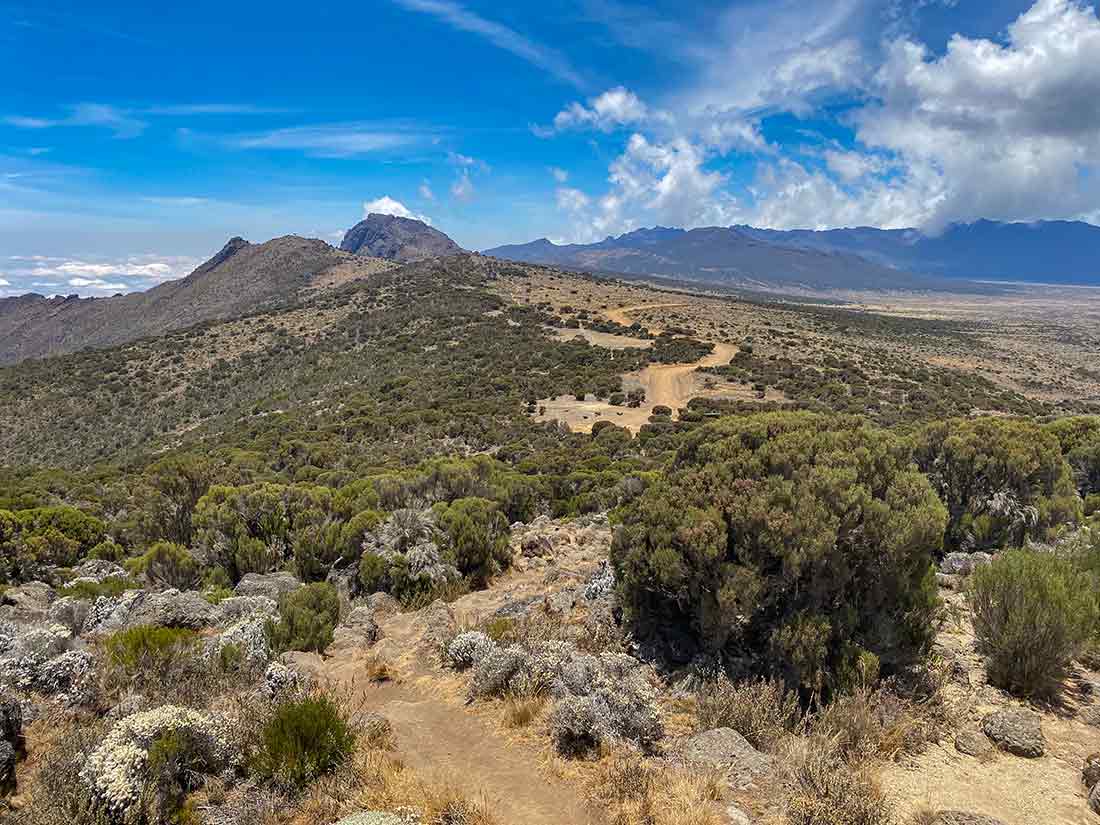
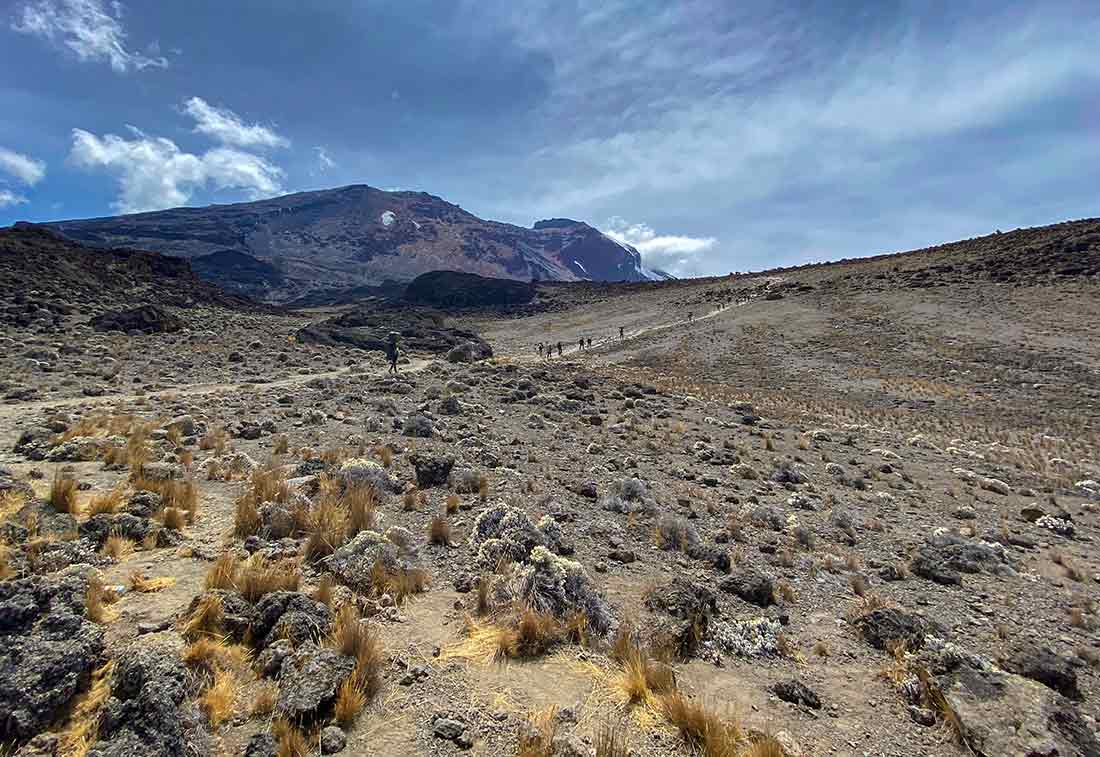
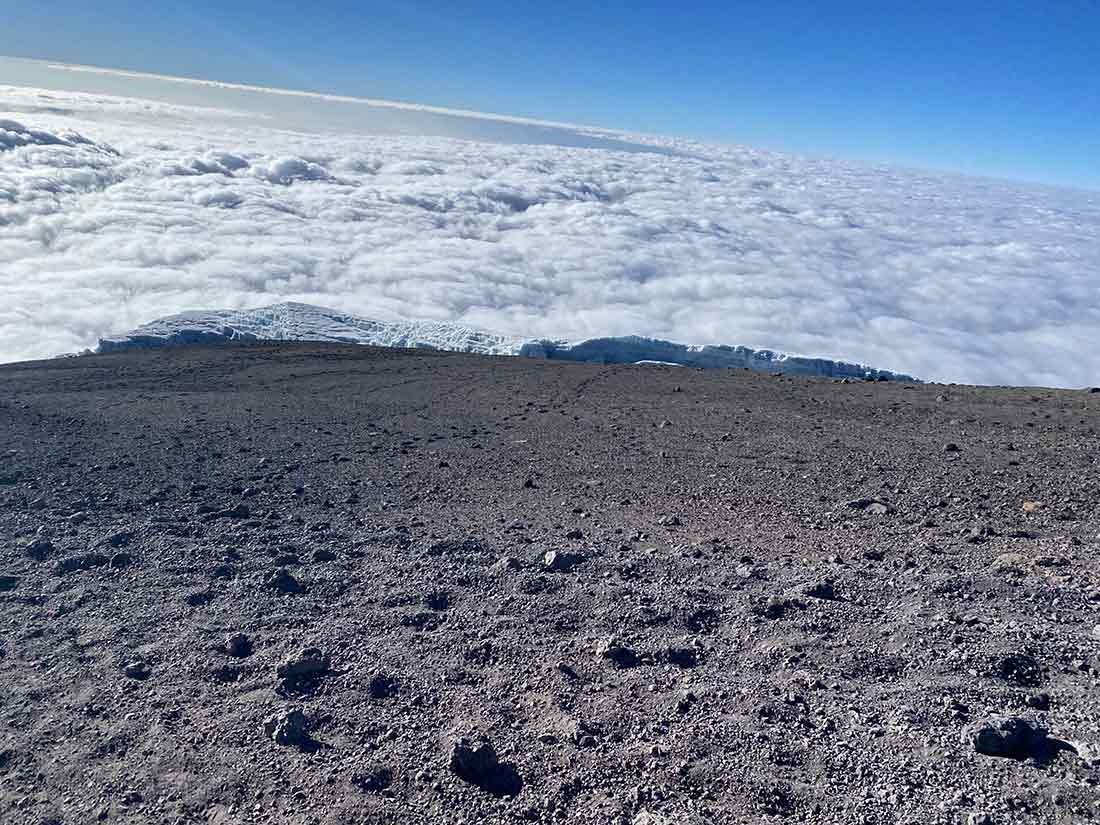


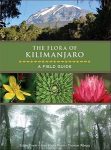 Final Thoughts
Final Thoughts

